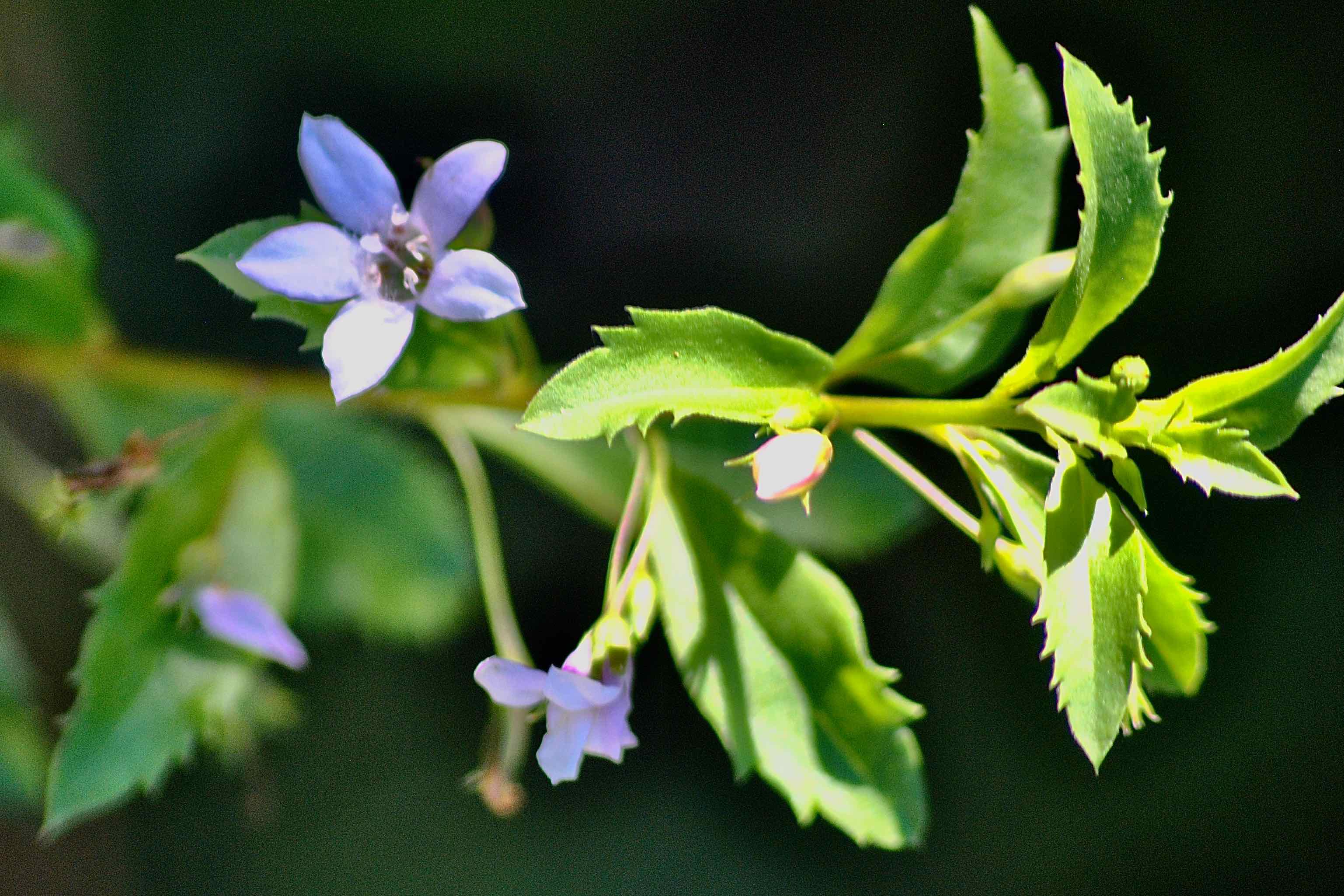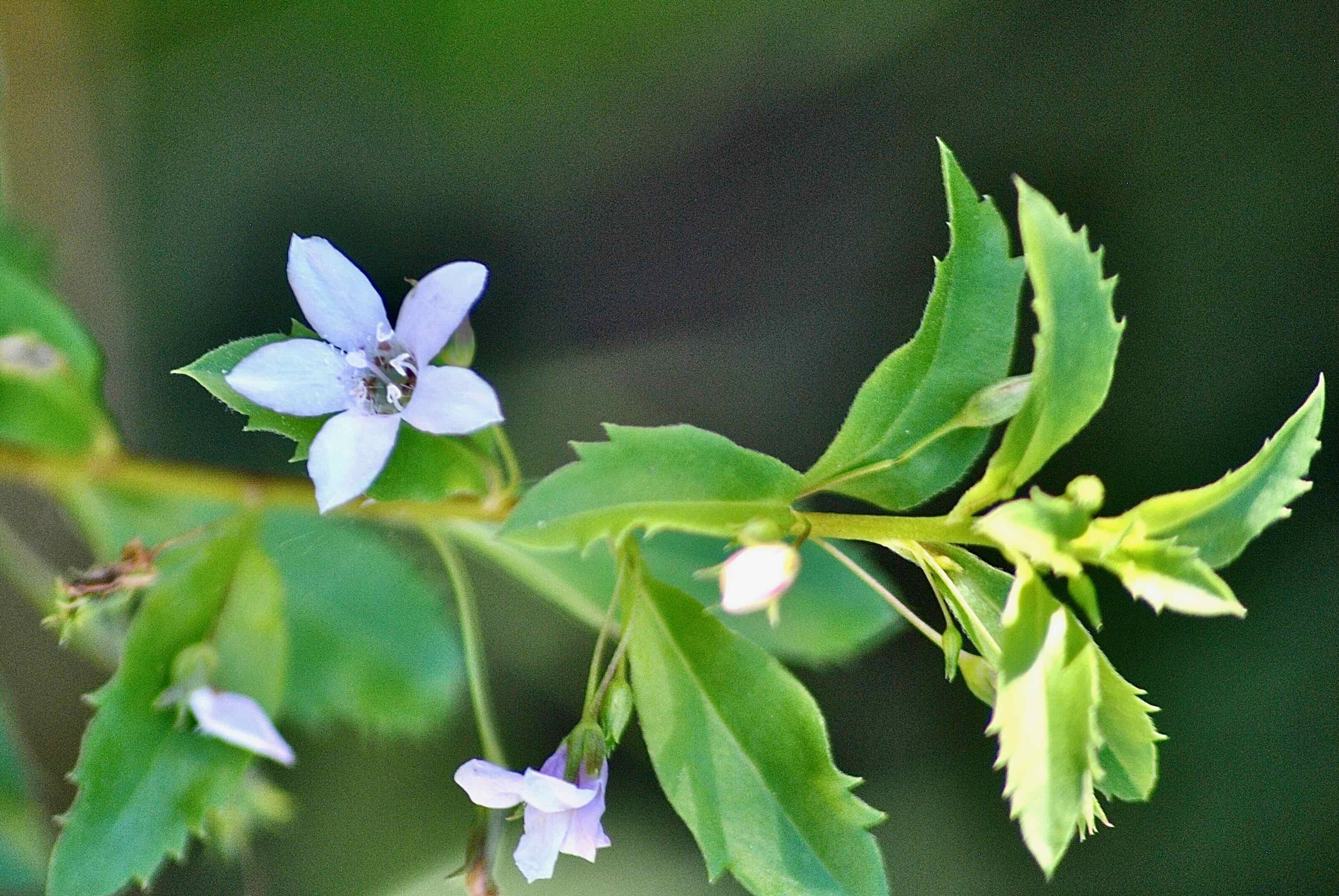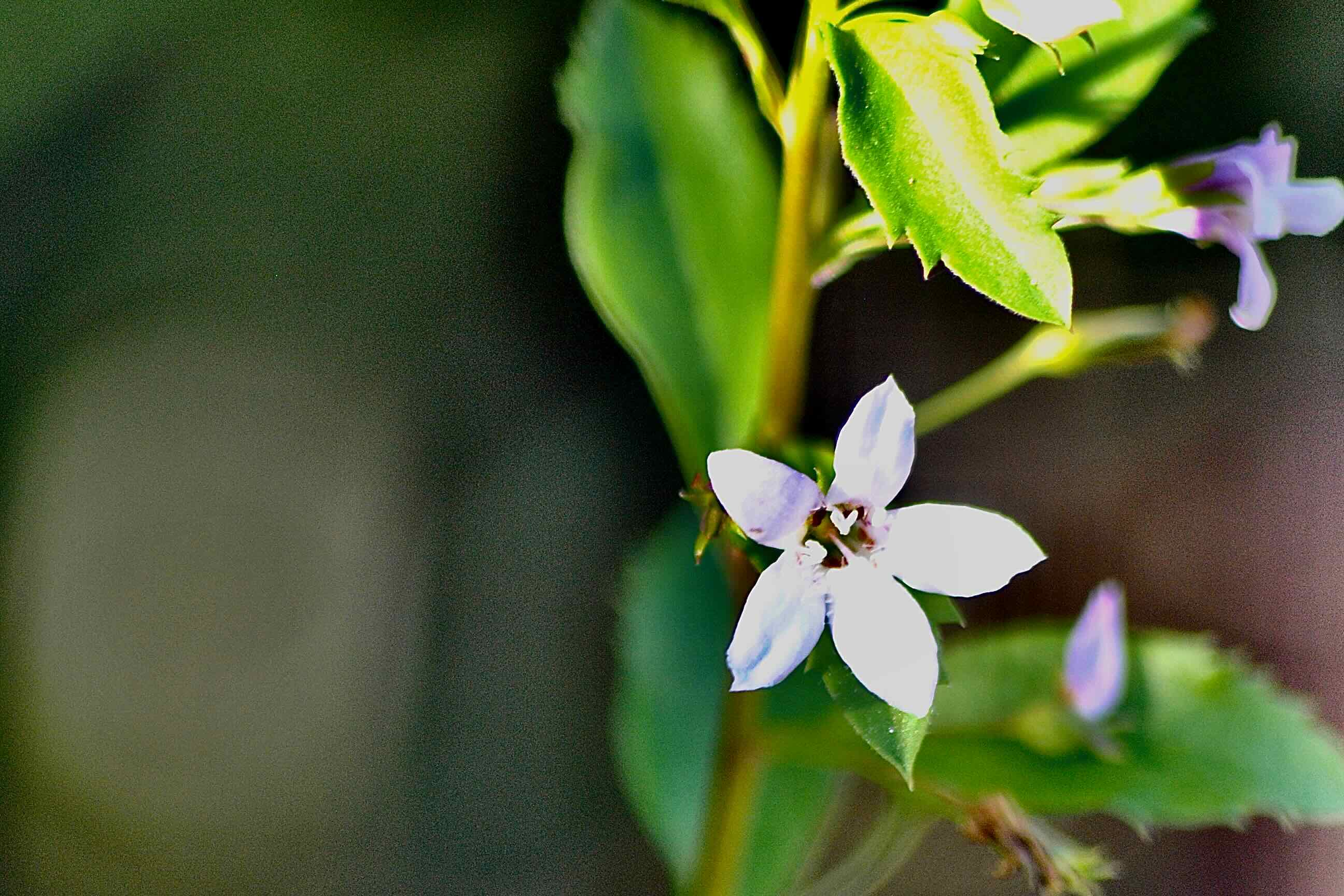
Goatweed photographed at the National Key Deer Refuge, Big Pine Key, Monroe County, in December 2013.
There is evil goatweed and then there is good goatweed. One is a major agricultural pest, the other a rather benign wildflower found a few counties in South Florida.
The pest is scientifically know as Scoparia dulcis, and is among the worst weeds affecting Florida’s citrus industry.
Our guy is Capraria biflora, a mild-mannered and beneficial wildflower and (probably) a Florida native found in the southern end of the state. A pest of any kind it is not.
We mention the evil goatweed to illustrate the importance of binomial, or scientific names given to plant species. Unlike with birds, there are no naming conventions when it comes to plants. One common name might be used for multiple species, and one species might have multiple common names. There are problems still with binomial names, but you’re much more likely to find the plant you’re looking for with it than without.
Now back to our regular programming and our discussion of Capraria biflora.
Florida is the northern-most part of goatweed’s natural range. It’s only found in a handful of Florida counties, none of which are north of Lake Okeechobee. However, its presence in those counties is wide enough that the Institute for Regional Conservation in Delray Beach considers goatweed secure, as in not vulnerable to extinction, within South Florida. It’s also found in Texas but only in one county in the most southern part of the state.
Goatweed’s range extends southward through the Caribbean, Mexico, Central America and South America. It’s also been found in the Galapagos Islands. It has been exported to other parts of the world where it’s used in traditional medicines.
Most sources we use, including the Institute for Regional Conservation, consider goatweed a Florida native as do the Florida Plant Atlas and the USDA PLANTS database. However, the Flora of North America considers it an import. Generally speaking, we go with the opinion of the local experts, so we’ll treat it as a native. The definition of a native is any plant or animal that was here when the first Europeans arrived in Florida during the 1500s.
So why the name goatweed? Because goats are one of the few grazing animals that will eat it.
The name of the genus, Capraria, derives from the Latin words capri, meaning goat, and arius, meaning pertaining to. Put it together and you’ve got pertaining to goats. Simple.
It’s a somewhat tall plant, reaching perhaps three or four feet into the air but also rather narrow. Leaves are described as spatulate — shaped like a spatula — a few inches long, with a few teeth toward the tip. Leaves are arranged alternately along the stems.
Goatweed’s flowers are white, maybe an inch across, with five petals creating a star shape. Buds are urn-like. Goatweed blooms throughout the year.
It’s found along the edges of coastal hammocks and coastal strands and in disturbed areas — it will quickly colonize an area that opens up for whatever reason. It is useful naturally as a ground cover and as cover for animals.
In Central and South America, goatweed is used in traditional medicines for its painkilling, anti-inflammatory and antibiotic properties. Various parts of the plant, particularly the leaves and flowers, are used to make a tea. It’s also used externally as an eyewash and to soothe itchy skin. There have been some scientific studies indicating goatweed’s potential, but there are also warnings that too much of it can be toxic.
Goatweed is a member of Scrophulariaceae, the figwort family, the best known of which is probably the snapdragon.
National Key Deer Refuge.


